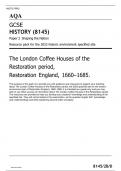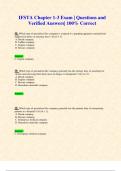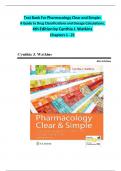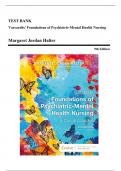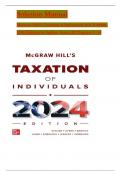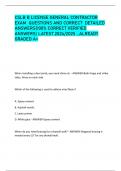Exam (elaborations)
AQA GCSE HISTORY (8145) Paper 2 Shaping the Nation Resource pack for the 2023 historic environment specified site(Restoration England, 1660–1685)
- Module
- GCSE HISTORY Paper 2
- Institution
- AQA
AQA GCSE HISTORY (8145) Paper 2 Shaping the Nation Resource pack for the 2023 historic environment specified site The London Coffee Houses of the Restoration period, Restoration England, 1660–1685. The purpose of this pack is to provide you with guidance and resources to support ...
[Show more]
